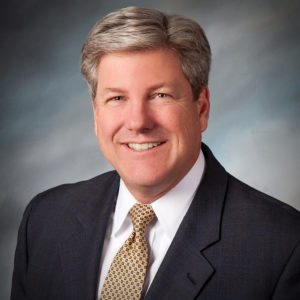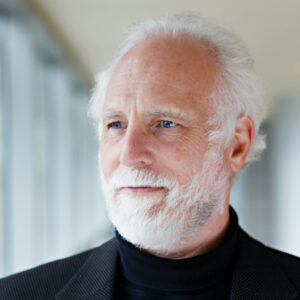![]()
Originally published on ThinkAdvisor.com, December 22, 2015
By Knut A. Rostad
Last week’s victory in Congress for the Department of Labor’s Conflict of Interest (COI) Rule is the best news for fiduciary advice since the March 30, 2007 FPA victory over the SEC in the so-called Merrill Lynch Rule. While opportunities remain in 2016 and beyond for opponents to derail the rule, against overwhelming Wall Street lobbying the COI survived.
The question becomes whether the COI Rule success is a one-off win – or a leading indicator of a broader movement toward fiduciary advice. Some evidence suggests COI has planted important seeds. Market forces and unprecedented media coverage have raised awareness of the harms of conflicts and excessive fees. The divide between financial firms’ opposition and advisers and brokers support is becoming increasingly clear. Further, fiduciary advisors have come together to advocate for fiduciary advice.
Here are a few developments which portend a growing movement.
1) Increasing Awareness of Fees and Expenses
Research has long shown many investors do not know what they pay in fees/expenses and many investors even believe they pay nothing at all. These investor misconceptions are important and why attention to investment costs matter. Attention reminds investors investment services are not “free” and spurs them to ask financial firms and advisors questions.
Reporting on fees and expenses has also focused more attention on automated digital brokers (aka: robo advisors). Robos have been a big industry story and well covered by personal finance columnists. HNW investors, led by millennials, have noticed. Research firm Capgemini reports that 87% of under 40 HNWI’s “expect all or most of their wealth management relationship to be conducted digitally in the next five years … (and) nearly 50% of HNW investors over 40 HNWI’s also preferred digital channels.”
2) Opposition Undressed
Fiduciary opponents defend their position with several specious arguments. The most notable: the rule would deny small investors access to “quality affordable retirement advice.” The claim is nonsensical but remains the cornerstone of anti-fiduciary advocacy.
Does this claim still matter? Financial lobbyists testified in August at DOL hearings and expressed resounding support for a best interest standard. Some dug into the COI rule to demonstrate why BICE requirements are “unworkable,” and raised valid technical points for streamlining the rule. Fair enough. Then something odd happened. Under sharp questioning some lobbyists went off their standard script and essentially conceded a huge point. About contractually binding their firms to fiduciary duties, the lobbyists seemed flummoxed. They struggled, unable to provide straight answers as to why they could not embrace fiduciary requirements. There were no clear explanations for why they could not sign a fiduciary contract and agree to standards of impartial conduct or agree to charge reasonable fees. This overriding image of exasperation and evasiveness is powerful video.
3) Broker Support
Meanwhile, brokers who work directly with investors beg to differ with their firms. And strongly so. They fundamentally reject the central idea advanced by financial firm lobbyists that the BICE is “unworkable.” In an Institute for the Fiduciary Standard / Wealth Management survey of brokers and RIAs, brokers found key BICE requirements to be, in fact, reasonable. Brokers believe to “Contractually acknowledge fiduciary status” is reasonable, 47 to 33% (20% neither) and to “Receive no more than reasonable compensation” is reasonable, 54 to 17% (30% neither).
4) Advisor Action
We also saw significant involvement of fiduciary advisors advocating for fiduciary advice. Most visible, in the DOL rule battle, the ongoing activity of the Financial Planning Coalition (CFP Board, FPA, and NAPFA) and the Committee for the Fiduciary Standard stand out. Also, the vital fiduciary voice in Washington of the Investment Advisers Association (IAA) is clear and present. (Disclosure: I’ve joined a number of IAA lobbying days to see first-hand how IAA’s voice has grown over several years.)
5) CFP Board Action
Kudos to the Certified Financial Planner Board of Standards (CFPB) which announced last week it will review its standards of conduct over the next year or so. This is an important development.
Institute for the Fiduciary Standard in 2015
‘2015 in Review’ would not be complete without a hearty thank you to leaders who have volunteered their time and counsel to help spear-head Institute programs and events. Institute board members, Mary Malgoire, Michael Zeuner and Jim Patrick deserve a special thank you for their leadership and vision and commitment.
The Chairman’s Council, comprising nine RIAs, formed in 2015 to advise on and advance Best PracticesThe Council’s work has been extremely important to the Best Practices Board. Thank you, Michael Warszawski, Chairman’s Council Moderator, for your leadership!
The Frankel Fiduciary Prize was established to acknowledge individuals who have made significant contributions to the preservation and advancement of fiduciary principles in public life. The nominating committee, under the able leadership of John C. Coffee Jr., Adolf A. Berle Professor of Law, Columbia Law School, has identified outstanding individuals. Thank you to the nominating committee members and Chairman Coffee.
The development of Best Practices for Financial Advisors has been the cornerstone of the Institute’s work in 2015. The Best Practices Board, after eighteen months and two drafts, released its practices September 30. Best Practices Board members deserve enormous credit for their tireless (and ongoing) efforts.
Last week Ron Rhoades, financial planning professor, researcher, practitioner and thought leader, acknowledged their work, writing in his blog about the Institute and Best Practices:
INSTITUTE FOR THE FIDUCIARY STANDARD. Another major development this Fall, and extending back for a full year, has been the development of “Best Practices” for all those providing investment advice by the Institute for the Fiduciary Standard. This set of ethical guidelines largely “got it right” – especially regarding the all-important requirements imposed on fiduciaries when an unavoidable conflict of interest is present. In succinct terms, amplified by explanations, these Best Practices, devised by a committee of practitioners, can serve to guide the profession forward.
Hats off to the Institute for the Fiduciary Standard and to the many members of the profession who have responded, and continue to respond, to the Institute’s call to “Get Involved.”
Through their ongoing promotion of their Best Practices, the Institute appears poised to heavily influence financial planning and investment advice as it evolves into a true profession.
The COI rule has set the stage for a fiduciary movement. With market forces, growing investor awareness and leadership from fiduciary advisors, a major force for investors far greater than imagined possible just a few short years ago, can thrive.

